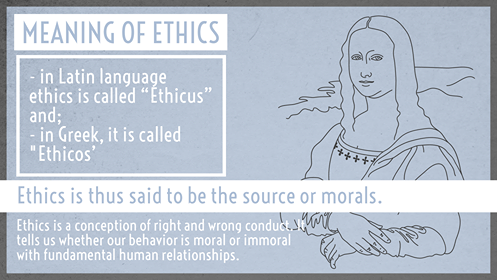1.4 The Importance of Communication
Communication Skills Are Essential in All Areas of Life
Communication is used in virtually all aspects of everyday life. In order to explore how communication is integrated into all parts of our lives, let us divide up our lives into four spheres: academic, professional, personal, and civic. These spheres overlap and influence one another. After all, our personal experience is brought into the classroom, much of what goes on in a classroom is present in our professional and personal environments, and the classroom has long been seen as a place to foster personal growth and prepare students to become active and responsible members of society.
Academic Success
You will bring your current communication-related knowledge, skills, and abilities to the classroom. Aside from wanting to earn a good grade, you may also be genuinely interested in becoming a better communicator. Research shows that even people who are poor communicators can improve their verbal, nonverbal, and interpersonal communication skills by taking communication courses (Zabava & Wolvin, 1993). Communication skills are also tied to academic success. Poor listening skills have been shown to contribute significantly to failure in a person’s first year of college. Also, students who take communication courses report having more confidence in their communication abilities, and these students have higher grade point averages and are less likely to drop out of school. Much of what we do in a classroom, whether it is the interpersonal interactions with our classmates and instructor, individual or group presentations, writing assignments, asking questions, or listening, can be used to build or add to a foundation of good communication skills and knowledge that can carry through to professional, personal, and civic contexts.

Professional Skills
The Corporate Recruiters Survey Report (Graduate Management Admission Council, 2017, p. 50) found that employers in health care and pharmacy, technology, nonprofit and government, and products and services industries list oral, written, listening, and presentation communication skills in their top five skills sought for midlevel positions. Adaptability was also ranked in the top five in three out of the four industries—the ability to be adaptable can be the result of a person’s ability to perceive, interpret, and share information. The survey also found that the need for teamwork skills is growing in demand. The ability to follow a leader, delegation skills, valuing the opinions of others, cross-cultural sensitivity, and adaptability were listed as teamwork skills, and these skills can also be the result of one’s communication skills.
Table 1.1. Top Five Skills Employers Seek, in Order of Required Proficiency, by Industry
| Rank | Health Care and Pharmacy | Technology | Nonprofit and Government | Products and Services |
| 1 | Oral communication | Oral communication | Oral communication | Oral communication |
| 2 | Listening skills | Listening skills | Listening skills | Integrity |
| 3 | Written communication | Written communication | Written skills | Written communication |
| 4 | Presentation skills | Adaptability | Presentation skills | Drive |
| 5 | Integrity | Presentation skills | Adaptability | Adaptability |
Note: Adapted from Corporate Recruiters Survey Report 2017, by the Graduate Management Admission Council, p. 50. https://www.mba.com/-/media/files/gmac/research/employment-outlook/2017-gmac-corporate-recruiters-web-release.pdf?la=en
Desired communication skills vary from career to career, but again, the academic sphere provides a foundation onto which you can build communication skills specific to your professional role or field of study. Poor listening skills, lack of conciseness, and the inability to give constructive feedback have been identified as potential communication challenges in professional contexts. Despite the well-documented need for communication skills in the professional world, many students still resist engaging in communication classes. Perhaps people think they already have good communication skills or can improve their skills on their own. Although either of these may be true for some, studying communication can only help.
Personal Communication Skills
Many students know from personal experience and from the prevalence of communication counselling on television talk shows and in self-help books that communication forms, maintains, and ends our interpersonal relationships, but they do not know the extent to which that occurs. Although we learn from experience, until we learn specific vocabulary and develop a foundational knowledge of communication concepts and theories, we do not have the necessary tools to make sense of these experiences. Just having a vocabulary to name the communication phenomena in our lives increases our ability to consciously alter our communication to achieve our goals, avoid miscommunication, and analyze and learn from our inevitable mistakes.
As mentioned earlier in the chapter, communication is required for us to meet our personal physical, instrumental, relational, and identity needs.
- Physical needs are needs that keep our bodies and minds functioning.
- Instrumental needs are needs that help us get things done in our day-to-day lives and achieve short- and long-term goals.
- Relational needs are needs that help us maintain social bonds and interpersonal relationships.
- Identity needs include our need to present ourselves to others and be thought of in particular and desired ways.
Civic Engagement
Civic engagement refers to working to make a difference in our communities by improving the quality of life of community members; raising awareness about social, cultural, or political issues (Image 1.10); or participating in a wide variety of political and nonpolitical processes (Ehrlich, 2000). The civic part of our lives is developed through engagement with the decision making that goes on in our society at small-group, local, state, regional, national, and international levels. Such involvement ranges from serving on a neighbourhood advisory board to sending an email to a political representative. Discussions and decisions that affect our communities happen around us all the time, but it takes time and effort to become part of that process. Communication scholars have been aware of the connections between communication and a person’s civic engagement or citizenship for thousands of years. Aristotle, who wrote the first and most influential comprehensive book on communication 2,400 years ago, taught that it is through our voice, our ability to communicate, that we engage with the world around us and participate in our society.

Diversity in Communication
Communication is the sharing of understanding and meaning (Pearson & Nelson, 2000), but what is intercultural communication? If you answered “the sharing of understanding and meaning across cultures,” you’d be close, but what is a culture? Culture is defined by more than ethnicity, race, or geography. A culture can exist wherever there is a group of people with shared beliefs, attitudes, values, and traditions. Multiple factors can shape a culture, including but not limited to age, gender, ethnicity, race, geography, workplace settings, family, abilities, and interests. According to Rogers and Steinfatt (1999), intercultural communication is the exchange of information among individuals who are “unalike culturally.” Let’s explore what intercultural communication can look like.
A culture’s beliefs, attitudes, values, and traditions are represented and expressed by the behaviours of its members. The language we use, the holidays we celebrate, the clothes we wear, the movies we watch, or the video games we play are just some of the ways we express our culture. Environment also shapes a culture, and a culture can shape the environment. For example, a person can grow up in a mountainous region and value the environment. If the person moves to a beach town, they may display pictures of their favourite mountains and participate in an outdoor club to continue to express and engage in their culture. Culture also involves the psychological aspects of our expectations of the communication context. For example, if we are raised in a culture where males speak while females are expected to remain silent, the context of the communication interaction governs behaviour, itself a representation of culture. From the choice of words (message), to how we communicate (in person or by email), to how we acknowledge understanding with a nod or a glance (nonverbal feedback), to the internal and external interference, all aspects of communication are influenced by culture.
Can there be intercultural communication within a culture? If all communication is intercultural, then the answer would be yes, but we still have to prove our case. Imagine a three-generation family living in one household. This family is a culture, but let’s look a bit closer. The grandparents may represent another time and different values from the grandchildren. The parents may have a different level of education and pursue different careers from the grandparents. The schooling the children receive may prepare them for yet other careers. From music to food preferences to how work is done may vary across time—singer Elvis Presley may seem like ancient history to the children. The communication across generations represents intercultural communication, even if only to a limited degree.
Another example is student culture. Let’s consider what other cultures likely impact the student culture at a school, university, or college. A group of students are likely all similar in age and educational level (Image 1.11). Do gender and the societal expectations of roles influence their interactions? Of course. And so we see that, among these students, the boys and girls not only communicate in distinct ways, but not all boys and girls are the same. A group of siblings may have common characteristics, but they will still have differences, and these differences contribute to intercultural communication. We are each shaped by our upbringing, and it influences our worldview, what we value, and how we interact with each other. We create culture, and it creates us.

If intercultural communication is the exchange of information among individuals who are “unalike culturally,” after reflecting on our discussion and its implications, you may arrive at the idea that ultimately we are each “a culture of one”—we are simultaneously a part of community and its culture(s) and separate from it in the unique combination that represents us as an individual. All of us are separated by a matter of degrees from each other even if we were raised on the same street, have parents of similar educational background and profession, and have many other things in common.
Communication with yourself is called intrapersonal communication, and it may also be intracultural, as you may only represent one culture, but most people belong to many groups, each with their own culture. Within our imaginary intergenerational home, how many cultures do you think we might find? If we only consider the parents, and consider work one culture and family another, we now have two. If we were to look more closely, we would find many more groups, and the complexity would grow exponentially. Does a conversation with yourself ever involve competing goals, objectives, needs, wants, or values? How did you learn of those goals or values? Through communication within and among individuals, they themselves are representative of many cultures. We struggle with the demands of each group and their expectations, and could consider this internal struggle intercultural conflict, or simply intercultural communication.
Culture is part of the very fabric of our thought, and we cannot separate ourselves from it, even when we leave home, defining ourselves anew in work and achievement. Every business or organization has a culture, and within what may be considered a global culture, there are many subcultures or co-cultures. For example, consider the difference between the sales and accounting departments in a corporation—we can quickly see two distinct groups, each with their own symbols, vocabulary, and values. Within each group there may also be smaller groups, and each member of every department comes from a distinct background that in itself influences behaviour and interaction.
Intercultural communication is a part of our everyday lives and occurs interpersonally (with others) and intrapersonally (within ourselves). Intercultural communication competency is rooted in understanding the cultures around us and adapting our communication to establish, maintain, and grow positive intercultural relationships.
Relating Theory to Real Life
Consider the definition of culture:
- What cultures do you feel you are a part of? What beliefs, attitudes, values, traditions, and behaviours represent your cultures?
- What cultures do you see within your own family?
- What cultural groups will you encounter in your future professional role?
- What will you need to learn to be a competent intercultural communicator in the workplace?
Ethical Communication in the Workplace
As demonstrated by the communication models presented earlier in this chapter, when we communicate, there is an immediate impact on others. This means communication has broad ethical implications. Not only do we need to learn how to communicate, but we also need to become ethical communicators by learning how to communicate the “right” way. But what does that look like?
Communication ethics deals with the process of negotiating and reflecting on our actions and communication regarding what we believe to be right and wrong. For example, we may make the choice to communicate our opinions about education to others. We would undergo a process of negotiating the ethics of this decision, such as to whom is it okay to communicate our opinions? When is it appropriate to tell others about our personal opinions? What details about our opinions is it okay to share? What is the right method for sharing our opinion? In communication ethics, we are more concerned with the decisions people make about communicating what is right and wrong than the systems, philosophies, or religions that inform those decisions. Much of ethics is a grey area. Although we talk about making decisions in terms of what is right and what is wrong, the choice is rarely that simple. Aristotle said that we should act “to the right extent, at the right time, with the right motive, and in the right way.” This quote connects to communication competence, which focuses on communicating effectively and appropriately.
We all make choices daily that are more ethical or less ethical, and we may confidently make a decision only to learn later that it wasn’t the most ethical option. In any given situation, multiple options may seem appropriate, but we can only choose one. If, in a situation, we make a decision and reflect on it, and then realize we could have made a more ethical choice, does that make us a bad person? Although many behaviours can be easily labelled as ethical or unethical, communication isn’t always as clear. Physically assaulting someone is generally thought of as unethical and illegal, but many instances of hurtful speech, or even what some would consider hate speech, have been protected as free speech. This shows the complicated relationship between protected speech, ethical speech, and the law. In some cases, people see it as their ethical duty to communicate information that they feel is in the public’s best interest. The people behind WikiLeaks, for example, have released thousands of classified documents related to wars, intelligence gathering, and diplomatic communication. WikiLeaks claims that exposing this information forces politicians and leaders to be accountable and keeps the public informed, but government officials claim that the release of the information should be considered a criminal act. Both parties consider their own communication ethical and the other’s communication unethical, so who is right?

Since many of the choices we make when it comes to ethics are situational, contextual, and personal, various professional fields have developed codes of ethics to help guide members through areas that might otherwise be grey or uncertain. A profession’s code of ethics describes what ethical behaviours, including communication, are expected of any member of the profession. Table 1.2 below lists a few examples of professions and which communication behaviours are considered ethical and expected as described in that profession’s code of ethics. Looking across different professions, we can see that ethical communication is expected in all service areas and that communication skills are key to meeting professional standards.
Table 1.2. Professional Organizations and Ethical Communication Expectation
| Professional Organization | Expected Ethical Behaviour Related to Communication |
| Child and Youth Care Association of Alberta (CYCCA) |
|
| Alberta Public Service |
|
| Alberta Therapeutic Recreation Association (ATRA) |
|
| Therapy Assistant Association of Alberta (ThAAA) |
|
| College of Alberta Dental Assistants (CADA) |
|
| Canadian Veterinary Medical Association (CVMA) |
|
| Alberta Health Services (AHS) |
|
Relating Theory to Real Life
- What situations might arise in your future professional role that will require you to communicate ethically?
- Why is it important for you, others, your workplace, and your community to be confident in communicating ethically?
Dynamic Communication Skills Are Needed in Current Workplaces
Communication Is Key to Your Success in Your Current Workplace
Your current ability to communicate comes from past experience, which can be an effective teacher. Now is the time to examine your current skillset and compare it to current workplace needs and skills that have been proven necessary when working on teams. “Great teams are distinguished from good teams by how effectively they communicate. Great team communication is more than the words that are said or written. Power is leveraged by the team’s ability to actively listen, clarify, understand, and live by the principle that ‘everything communicates.’ The actions, the tone, the gestures, the infrastructure, the environment, and the things that are not done or said speak and inform just as loudly as words” (O’Rourke & Yarbrough, 2008).
Workplace environments have evolved. An article in the Harvard Business Review states that current workplace teams are more “diverse, dispersed, digital, and dynamic (with frequent changes in membership). But while teams face new hurdles, their success still hinges on a core set of fundamentals for group collaboration” (Haas & Mortensen, 2016). Haas and Mortensen further describe four conditions that need to be established for effective collaboration: compelling direction (when a team establishes explicit goals), strong structure (the team has the right mix of members, and the right processes and norms in place to guide behaviour), supportive context (the team has a reward system, an information system, and an educational system in place to enable progress), and a shared mindset (when a team develops a common identity and understanding). Communication is central to establishing all four conditions. Effective teams and groups in current workplace environments need effective communication. Now is the time to consider what communication skills you have and which ones you need to grow to effectively contribute to your future team.
Communication Merges You and Them
When we join a workplace team, communication is a non-negotiable skill in a complex environment. Being able to communicate allows us to share a part of ourselves, connect with others, and meet our needs on a team. Being unable to communicate might mean losing, hiding, or minimizing a part of yourself. Sharing with others feels vulnerable. For some, this may be a positive challenge, whereas for others it may be discouraging, but in all cases, your ability to communicate is central to your expression of self.

On the other side of the coin, your communication skills help you understand others on a team—not just their words, but also their tone of voice, their nonverbal gestures, and the format of their written documents provide you with clues about who they are and what their values and priorities may be. Expressing yourself and understanding others are key functions of an effective team member and part of the process of becoming an effective team (Image 1.13).
Communication Influences How You Learn
You need to begin the process of improving your communication skills with the frame of mind that it will require effort, persistence, and self-correction. You learn to speak in public by first having conversations, then by answering questions and expressing your opinions in class, and finally by preparing and delivering a “stand-up” speech. Similarly, you learn to write by first learning to read, then by writing and learning to think critically. Your speaking and writing are reflections of your thoughts, experience, and education, and part of that combination is your level of experience listening to other speakers, reading documents and various styles of writing, and studying formats similar to what you aim to produce. Speaking and writing are both key communication skills that you will use in teams and groups.
As you study group communication, you may receive suggestions for improvement and clarification from professionals more experienced than yourself. Take their suggestions as challenges to improve—don’t give up when your first speech or first draft does not communicate the message you intended. Stick with it until you get it right. Your success in communicating is a skill that applies to almost every field of work, and it makes a difference in your relationships with others. Remember that luck is simply a combination of preparation and timing. You want to be prepared to communicate well when given the opportunity. Each time you do a good job, your success will bring more success.
Communication Represents You and Your Employer
You want to make a good first impression on your friends and family, on your instructors, and on your employer. They all want you to convey a positive image because it reflects on them. In your career, you will represent your business or company in teams and groups, and your professionalism and attention to detail will reflect positively on you and set you up for success.
As an effective member of the team, you will benefit from having the ability to communicate clearly and with clarity. You will use these skills for the rest of your life. Positive improvements in these skills will have a positive impact on your relationships, your prospects for employment, and your ability to make a difference in the world.
Communication Skills Are Desired by Business and Industry
Oral and written communication proficiencies are consistently ranked in the top 10 desirable skills by employer surveys year after year. In fact, high-powered business executives sometimes hire consultants to coach them in sharpening their communication skills. According to the National Association of Colleges Job Outlook 2023 survey (Gray, 2022), the top five attributes that employers seek on a candidate’s resumé are the following:
-
- Problem-solving skills
- Ability to work on a team
- Strong work ethic
- Analytical and quantitative skills
- Written communication skills
- Technical skills
Knowing this, you can see that one way for you to be successful and increase your promotion potential is to improve your ability to speak and write effectively.
Teams and groups are almost universal across all fields because no one person has all the skills, knowledge, or ability to do everything with an equal degree of excellence. Employees work with each other in manufacturing and service industries on a daily basis. An individual with excellent communication skills is an asset to every organization. No matter what career you plan to pursue, learning to interact, contribute, and excel in groups and teams will help you get there.
Digital and Electronic Communication Are Here to Stay
Computers and the internet entered the world in the 1940s and have been on the rise ever since. According to Jotform (2021), a global pandemic necessitated the use of digital and electronic communication because people were required to work from home as much as possible. Digital and electronic communication tools such as video-conferencing platforms, cloud storage, messaging platforms, and digital forms are now widely used and easily accessible. It’s not clear yet what digital and electronic communication methods will remain in use; however, because of their prevalence, we need to consider our communication skills in these digital and electronic environments.
Netiquette refers to etiquette, or protocols and norms for communication, when communicating using digital and electronic methods. Whatever digital device you use, written communication in the form of brief messages, or texting, has become a practical way to connect when talking on the phone or when meeting in person would be cumbersome. Texting is not useful for long or complicated messages, and careful consideration should be given to the audience. Email is frequently used to communicate among co-workers and has largely replaced print hard-copy letters for external (outside the company) correspondence, as well as taking the place of memos for internal (within the company) communication (Guffey, 2008). Email can be very useful for messages that have slightly more content than a text message, but it is still best used for fairly brief messages. Emails may be informal in personal contexts, but business communication requires attention to detail, an awareness that your email reflects you and your company, and a professional tone so that the email may be forwarded to a third party, if needed. Remember that when these tools are used for business, they need to convey professionalism and respect.
Relating Theory to Real Life
- Knowing what communication skills employers and current workplace environments require, what skills are you strong in right now? What skills do you need to develop?
- How do you see face-to-face and digital and electronic communication skills being similar and/or different? Where do you see face-to-face and digital and electronic communication in your future professional role?
Attribution
Unless otherwise indicated, material on this page has been reproduced or adapted from the following resource:
University of Minnesota. (2016). Communication in the real world: An introduction to communication studies. University of Minnesota Libraries Publishing. https://open.lib.umn.edu/communication, licensed under CC BY-NC-SA 4.0, except where otherwise noted.
References
Alberta Health Services (AHS). (2023). Ethics & compliance. https://www.albertahealthservices.ca/about/Page645.aspx
Alberta Health Services (AHS). (2016). Code of conduct. https://www.albertahealthservices.ca/assets/about/policies/ahs-pub-code-of-conduct.pdf
Alberta Therapeutic Recreation Association (ATRA). (2021). Code of ethics: A guide for ethical and moral decision-making for recreational therapists. https://www.alberta-tr.ca/media/91513/codeofethics11may2021.pdf
Bourque, T., & Horney, B. (2016). Principles of veterinary medical ethics of the CVMA. Canadian Veterinary Medical Association. https://www.canadianveterinarians.net/about-cvma/principles-of-veterinary-medical-ethics-of-the-cvma/
Canadian Veterinary Medical Association (CVMA). (2016). Principles of veterinary medical ethics of the CVMA. https://www.canadianveterinarians.net/media/o5qjghc0/principles-of-veterinary-medical-ethics-of-the-cvma.pdf
Child and Youth Care Association of Alberta (CYCAA). (2008). Code of ethics. https://www.cycaa.com/about-us/code-of-ethics
College of Alberta Dental Assistants (CADA). (2019). Code of ethics. http://abrda.ca/protecting-the-public/regulations-and-standards/code-of-ethics/
Cyr, C., Helgason, E., Appleton, K., & Yunick, A. (2021). Code of ethics: A guide for ethical and moral decision-making for recreation therapists. Alberta Therapeutic Recreation Association. https://www.alberta-tr.ca/media/91513/codeofethics11may2021.pdf
Ehrlich, T. (Ed.). (2000). Civic responsibility and higher education. Oryx Press.
Government of Alberta. (2023). Code of conduct and ethics for the Alberta Public Service. https://www.alberta.ca/code-of-conduct-and-ethics-for-the-alberta-public-service.aspx
Graduate Management Admission Council. (2017). Corporate recruiters survey report 2017. https://www.mba.com/-/media/files/gmac/research/employment-outlook/2017-gmac-corporate-recruiters-web-release.pdf?la=en
Gray, K. (2022, November 15). As their focus on GPA fades, employers seek key skills on college grads’ resumes. National Association of Colleges and Employers (NACE). https://www.naceweb.org/talent-acquisition/candidate-selection/as-their-focus-on-gpa-fades-employers-seek-key-skills-on-college-grads-resumes/
Guffey, M. (2008). Essentials of business communication (7th ed.). Thomson/Wadsworth.
Haas, M., & Mortensen, M. (2016, June). The secrets of great teamwork. Harvard Business Review. https://hbr.org/2016/06/the-secrets-of-great-teamwork
Jotform. (2021, December 8). How technology has changed workplace communication. https://www.jotform.com/blog/technology-and-workplace-communication/
O’Rourke, J., & Yarbrough, B. (2008). Leading groups and teams. South-Western Cengage Learning.
Pearson, J., & Nelson, P. (2000). An introduction to human communication: Understanding and sharing. McGraw-Hill.
Rogers, E., & Steinfatt, T. (1999). Intercultural communication. Waveland Press.
Therapy Assistant Association of Alberta (ThAAA). (2012). Code of ethics. http://thaaa.ca/wp-content/uploads/2019/08/ThAAA_Code-of-Ethics.pdf
Zabava Ford, W. S., & Wolvin, A. D. (1993). The differential impact of a basic communication course on perceived communication competencies in class, work, and social contexts. Communication Education, 42(3), 215–223. https://doi.org/10.1080/0363452930937892
Image Credits (images are listed in order of appearance)
Figure 6. Graduation by Hippo px by U3167879, CC BY-SA 4.0
Protest-sofia-incinerator by 008all, CC BY-SA 4.0
Group of students in front of the DARM by Violetova, CC BY-SA 4.0
Meaning of ETHICS101 by Pokemon1244, CC BY-SA 4.0
Teamwork Skills Training Workplace Illustration by Digits.co.uk Images, CC BY 2.0

